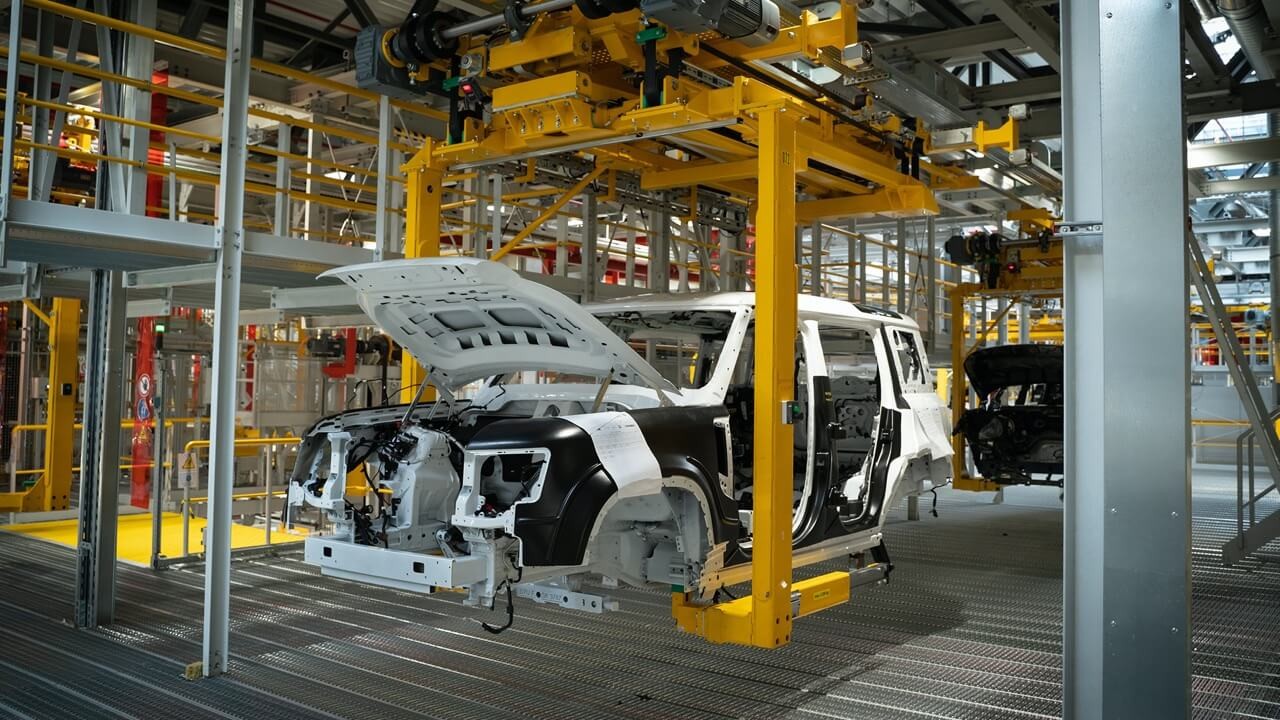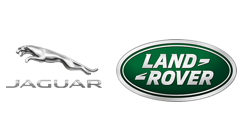At a Glance
Today’s vehicles are no longer solely a means of transportation. They have become increasingly complex, interconnected ecosystems which blend consumer-facing infotainment systems with safety-critical hardware and software. Original Equipment Manufacturers (OEMs) face an unprecedented challenge, merging data management, software development, and design into a single, unified process.
“We’re moving from looking at vehicles as collections of moving parts to looking at them as singular, complete entities,” explains Peter Virk, Jaguar Land Rover’s Director of Connected Car and Future Technology. “Networks where all systems support one another, and where there’s open communication between elements. It is a challenge which no organisation can tackle on its own, and one which requires a change in both mindset and approach.”
This is something that Jaguar Land Rover has been working on for more than a decade. It has long been a frontrunner in automotive technology. As such, it has also long championed the necessity of a collaborative approach in engineering modern vehicle systems.
For Jaguar Land Rover, BlackBerry® QNX® is a foundational part of that approach.
The Collaborative Road Ahead
With a focus on providing an exceptional driving experience, Jaguar Land Rover envisions a future it calls “Destination Zero:” zero emissions, zero accidents, and zero congestion. An autonomous, connected, electric, shared society. A world of smart cities, self-driving electric cars, and the Internet of Things.
In recent years especially, it has made great strides towards that future.
The newly released Land Rover Defender, for instance, is one of the most advanced vehicles Jaguar Land Rover has ever developed. A powerful, efficient hybrid electric four-wheel drive vehicle, the Defender features the latest infotainment and Advanced Driver Assistance Systems (ADAS). To make the new Defender a reality, Jaguar Land Rover partnered with leaders across multiple industries and sectors – just as it has forged multiple partnerships to further its research into autonomous driving.
“When we create a vision, the first thing we ask is whose expertise is necessary to help us fulfill it,” explains Virk. “Who has the components or systems or off-the-shelf software we require? Who has the necessary passion for innovation and engineering to work with us on this project?”
“Together with our partners, we can work to understand where we are today, what we need to achieve, and where we want to be tomorrow,” Virk continues. “And more importantly, to understand how we will get there.”
In Jaguar Land Rover’s case, its expertise is in providing the customer with what they need. In optimising the interactions between driver and vehicle, providing an intuitive, seamless software-defined driving experience. In creating excellent customer-facing systems built upon partnerships.
“The way we look at it, there’s no point in reinventing the wheel for every project,” says Virk. “The best way to foster innovation is by leaning on and challenging one another, both internally and with our partners. Everyone has their own area of expertise, and we can accomplish so much more by moving forward together rather than doing everything in isolation by ourselves.”

Building Out From a Strong Foundation
The automotive industry is unique from a software perspective. Robustness, safety, and security are not competitive differentiators. They are non-negotiable, such that every in-vehicle software system, no matter what it is, what it does, and who developed it, must be built with these principles in mind.
“In software-defined vehicles, it’s the user experience that’s differentiating,” Virk explains. “What that means to us is that there are foundational elements that we can all share. Every automotive business needs to prioritise a good foundation.”
“The analogy I like to use is that of a house,” says Virk. “If a house is built on a strong foundation, then everything else will be more solid by association. If it’s built on a weak foundation, then every addition you make is going to strain it, until it eventually buckles.”
It was Jaguar Land Rover’s search for this strong foundation that brought it to the QNX® Neutrino® Real-Time Operating System (RTOS). Certified to ISO 26262 ASIL D, the QNX Neutrino RTOS is used in more than 150 million vehicles on the road today.
For Jaguar Land Rover, the power of the QNX Neutrino RTOS lies not just in its architecture, but also that it serves as a safety-certified foundation for secure connectivity between automotive systems.
“When it comes to the future of the automotive industry, connectivity is the glue that holds everything else together,” explains Virk. “To actually take a platform approach which is safe, secure, and reliable, you need to make sure a vehicle’s systems are connected not just to one another, but to both the driver and external platforms. Autonomous driving, ADAS, interactive off-roading, and smart charging functionality are all predicated on connectivity.”
But it wasn’t just QNX’s real-time operating system that inspired Jaguar Land Rover to pursue a partnership with BlackBerry.
“When it comes to selecting our partners, it’s not just about technology,” says Virk. “It’s about where we see the potential to forge deep, lasting relationships. About finding partners who are not just industry leaders, but who are willing to work with us as we challenge one another to hit new and unexplored innovation points.”
Choosing a Strong Foundation for a Next-Generation Operating System
Having worked closely with BlackBerry in the past, Jaguar Land Rover recently sought out BlackBerry QNX as one of its partners in the development and deployment of a next-generation in-vehicle infotainment (IVI) system. At the time, this next generation IVI system was still in its conceptual stages. The organisation had come up with a number of customer-first views and ideas but had yet to translate any of these into the real world.
“We had this idea for a new generation of IVI, starting from the customer’s perspective,” recalls Virk. “Always updateable, instantly accessible, and incredibly intuitive. A system capable of intelligently providing information the moment it’s needed, effectively arming vehicles with the same level of functionality as a consumer smartphone.”
Jaguar Land Rover wanted to bring this idea to life in a tangible way. Rather than creating a desk simulation or a slide deck, its goal was to develop a drivable prototype. Moreover, it sought to accomplish this within a narrow timeframe – six to nine months.
“We wanted to take all this knowledge we’d gathered over the years and leverage it,” says Virk. “Our goal was to show that this vision was not only possible, but also realistic. So, we started to look through our partner ecosystem to see who we could select based on expertise, history, and reputation.”
With the BlackBerry QNX RTOS as a foundation, BlackBerry and Jaguar Land Rover collaborated to create Pivi Pro, the next-generation infotainment system available in the new Land Rover Defender.
“Partners like BlackBerry have really helped us transform our position in the industry today because they allow us to focus more on the customer experience,” says Virk. “We can focus on doing what we do best, secure in the knowledge that our partnerships will allow us to fill in knowledge and skill gaps.”
Driving Together Into the Future
If there’s one thing that Jaguar Land Rover has in common with BlackBerry, it’s that partnerships are the lifeblood of its success. Where the organisation stands today has been the result of collaboration on a global scale. Every innovation has been achieved through brainstorming and cooperation with partners all across the world, from the United Kingdom to Canada to South Korea to the United States.
“The real power of collaboration lies in bringing together different perspectives,” says Virk. “And it’s why our success as a business is not just about the products we make, but the partners we work with to make them. We’re proud to count BlackBerry as one of those partners and look forward to further deepening our relationship as we move forward.”
About Jaguar Land Rover
Jaguar Land Rover is the UK’s largest automotive manufacturer, built around two iconic British car brands: Land Rover, the world’s leading manufacturer of premium all-wheel-drive vehicles; and Jaguar, one of the world’s premier luxury sports saloon and sports car marques.
At Jaguar Land Rover, we are driven by a desire to deliver class-leading vehicles, which will provide experiences our customers will love, for life. Our products are in demand around the globe. In 2019 Jaguar Land Rover sold 557,706 vehicles in 127 countries.
We support around 260,000 people through our retailer network, suppliers and local businesses. At heart we are a British company, with two major design and engineering sites, three vehicle manufacturing facilities, an Engine Manufacturing Centre and soon to be opened Battery Assembly Centre. We also have vehicle plants in China, Brazil, India, Austria and Slovakia. We have seven technology hubs. In the UK these are based in Manchester, Warwick (NAIC) and London. Globally these are located in Shannon, Ireland, Portland, USA, Budapest, Hungary and Changshu, China.
We have a portfolio of electrified products across our model range, embracing fully electric, plug-in hybrid and mild hybrid vehicles as well as continuing to offer the latest diesel and petrol engines. From 2020, all new Jaguar and Land Rover vehicle models offer the option of electrification, giving our customers even more choice.
Jaguar Land Rover PR social channels:
Twitter: @JLR_News
For more information visit www.media.jaguarlandrover.com
Organization Profile
Industry Automotive
Location United Kingdom
https://www.jaguarlandrover.com/
